9.000 €
Oil on canvas : 76,3 X 63,5 cm
Unsigned
Frame : 90,7 X 76,6 cm
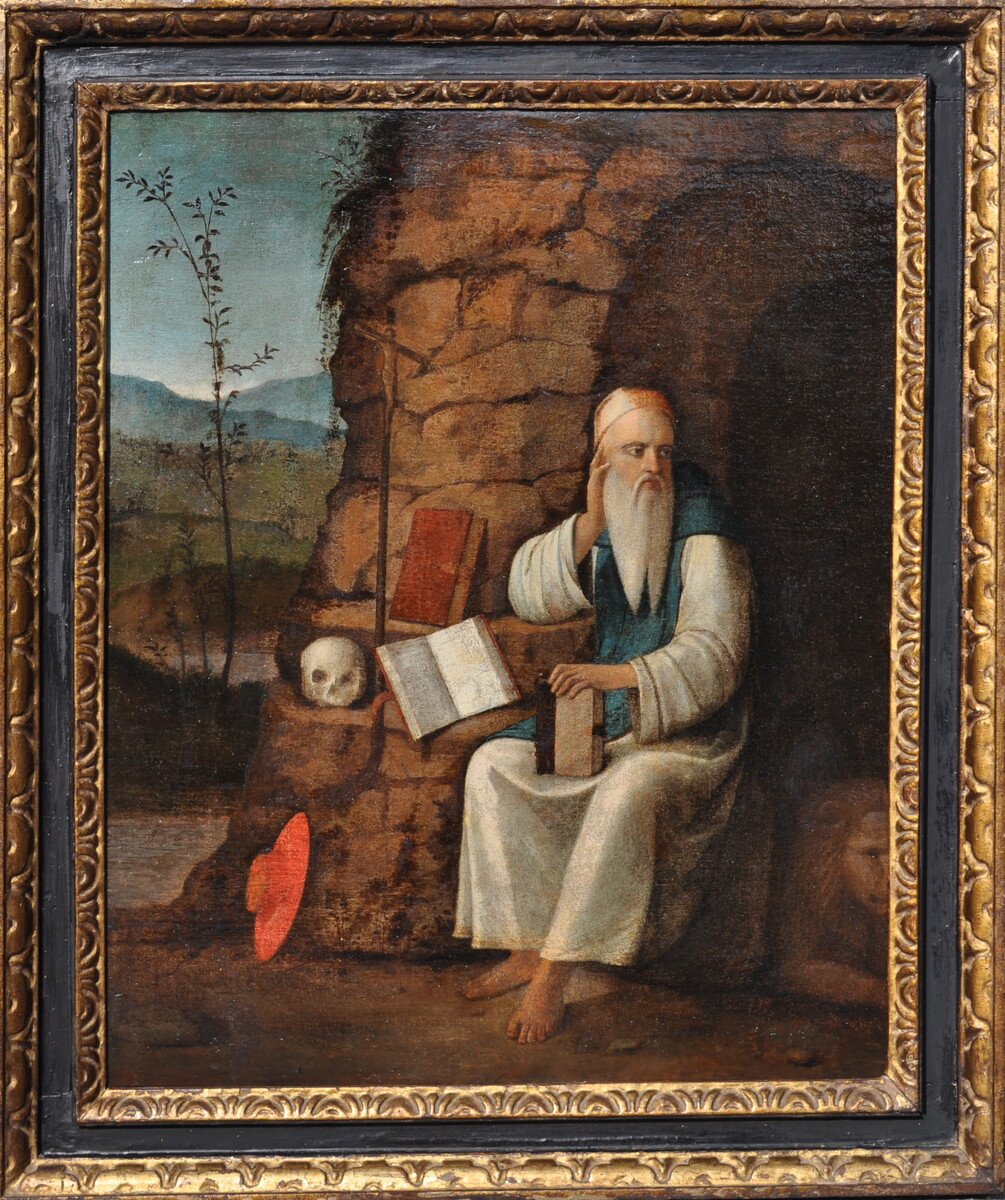
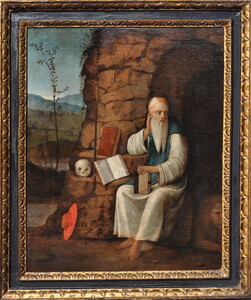
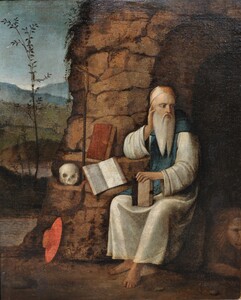

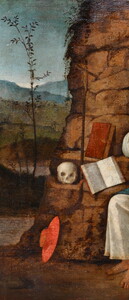
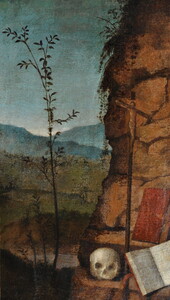
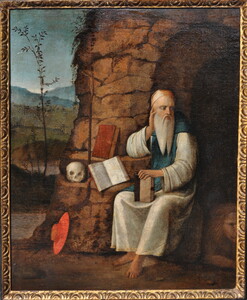
In short
Saint Jerome was a favourite saint of the Renaissance Humanists; he had translated the Bible from Hebrew and Greek into Latin.
His symbols are the lion and the cardinal’s hat. A wounded lion with a thorn in its paw had been looked after by the saint. Because the other
three Church Fathers were a pope and two bishops it was thought fitting to picture Saint Jerome as a cardinal, although he was but a simple anchorite.
Giovanni Bellini, one of the most influential Venetian painters, made several paintings representing Saint Jerome. He died in 1516.
About Saint Jerome
Stridon (near present-day Ljubljana) circa 347 – 420 near Bethlehem
Catholic saint, doctor of the church and one of the four Latin church fathers, with Saint Augustine, Saint Ambrose and Pope Gregory I.
Author of the definitive and officially promulgated Latin version of the Bible of the Roman Catholic Church, the so-called Vulgate which he translated from the Hebrew and from the Greek. Saint Jerome is one of the most voluminous writes of ancient Latin Christianity, second only to Saint Augustine.
In art Saint Jerome was a very popular subject, represented in a few diverse, but always easily recognizable ways:
- usually he is portrayed as an older man, half-bold, with a beard and a body that has suffered from his life as an anchorite;
- he can be shown as a half-naked hermit wearing a red tunica, or as a monk, or as a cardinal;
- traditional iconographic elements such as the cardinal’s hat, the cross, skull and bible, sometimes a lion, will always identify a saint as Saint Jerome;
- he can be represented writing in a study or having his vision of an angel or a trumpet appearing to him in a bare wilderness or finally we sometimes see him in the courtyard of a monastery, confronted with a lion.
Antonello da Messina, Giovanni Bellini, Ghirlandaio, Carpaccio, El Greco, Caravaggio, Dürer, Joos van Cleve, Marinus van Reymerswaele. So many artists painted Saint Jerome in the most diverse, but always very moving, ways.
The lion as his symbol goes back to a medieval story. It was said that one evening as he sat within the gates of his monastery at Bethlehem, a lion entered limping. All the monks ran away, but Saint Jerome went forward to meet him, as if he were a guest. The lion lifted his paw, and Saint Jerome examining it found that it was wounded by a thorn, which he extracted, and cared for the foot until it was healed. The grateful lion remained with his benefactor ever after.
The representation of Saint Jerome as a cardinal or with a cardinal’s hat is of course erroneous: cardinals were not known until three centuries later than his time. Because the other Church Fathers held high positions in the Church (Augustine and Ambrose were bishops, Gregory a pope) and were represented in ecclesiastical costumes, and as Saint Jerome held a dignified office in the court of Pope Damasus I, it did seem fitting to picture him as a cardinal or at least with a cardinal’s hat.
About Giovanni Bellini
Italian painter
Venice circa 1430/35 – 1516 Venice
Bellini was born into an important artistic family:
- he was a pupil of his father, Jacopo
- he was the younger brother of Gentile
- he was the brother-in-law of Andrea Mantegna
Throughout his long career Giovanni Bellini was a leading figure of 15th century Renaissance painting in Venice.
Painter of religious subjects (from small Madonna’s with child to large altar pieces and cycles of history painting) and of portraits.
Master in the rendering of natural light, atmosphere and colour, famous for his tender and graceful figures. He started in a rather pathetic, swollen language that gradually evolved into a more serene, tranquil style.
Why should you buy this painting?
Because you like its sculptural style and linear effect.
Comparative paintings
Click photos for more details







